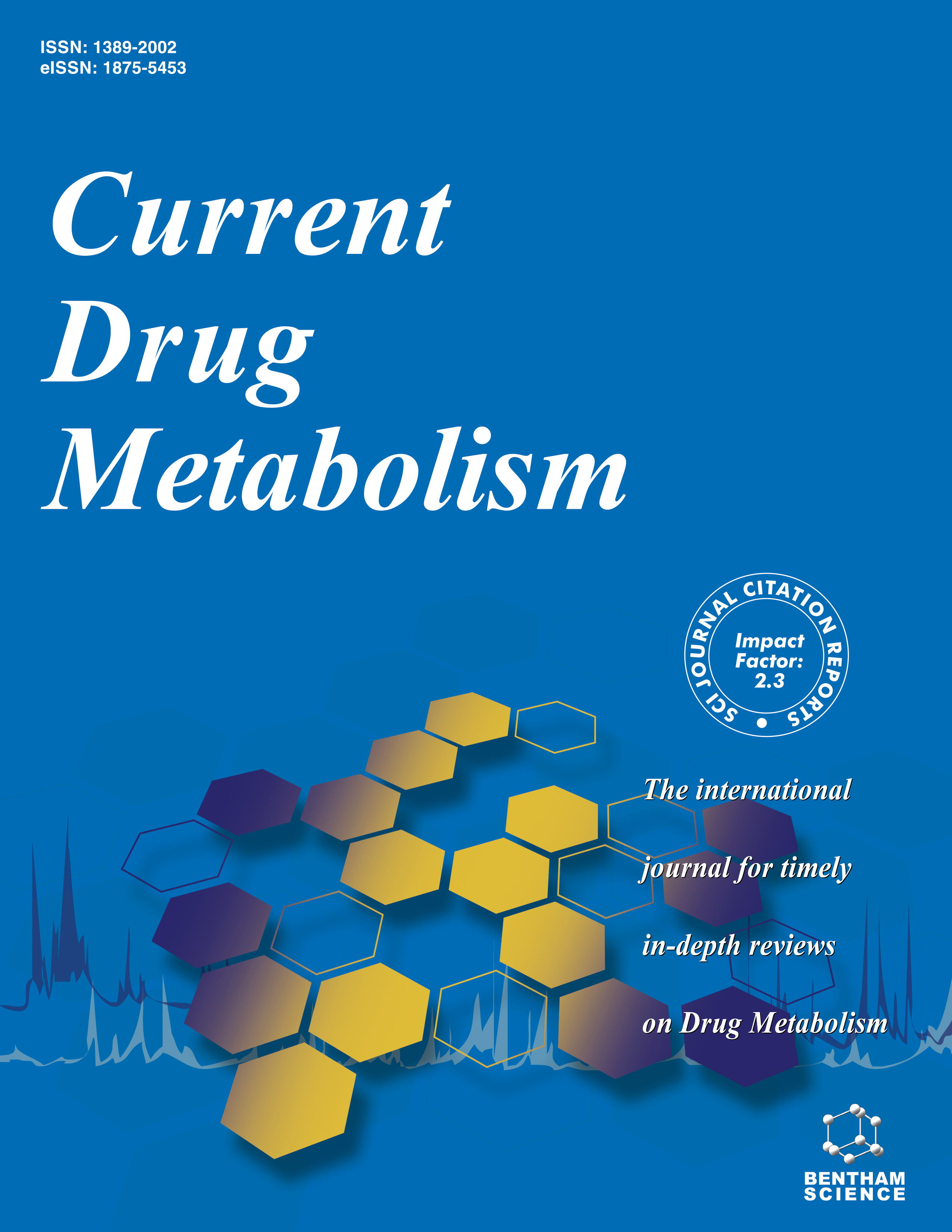- Home
- A-Z Publications
- Current Drug Metabolism
- Previous Issues
- Volume 11, Issue 5, 2010
Current Drug Metabolism - Volume 11, Issue 5, 2010
Volume 11, Issue 5, 2010
-
-
Editorial [Hot topic: Updates on Therapeutic Approaches to Inflammatory Skin Diseases: From Molecular Targets to Drug Development. Part II (Guest Editors: L. Korkina & S. Pastore)]
More LessAuthors: Liudmila Korkina and Saveria PastoreIf the First Volume of the Hot Topic Issue has covered mainly the vast and rapidly growing field of targeted “biological” drugs developed on purpose to specifically inhibit or even completely interrupt inflammatory pathways in the patients affected by chronic immune-mediated skin diseases, the Second Volume provides comprehensive reviews on the “re-discovery” of natural low molecular weight substances with potent anti-infla Read More
-
-
-
Signaling by Reactive Oxygen and Nitrogen Species in Skin Diseases
More LessFor many years the formation of reactive oxygen and nitrogen species (ROS) and (RNS) in living organisms has been considered to be dangerous phenomenon due to their damaging action on biomolecules. However, present studies demonstrated another important activity of ROS and RNS: their signaling functions in physiological and pathological processes. In this work we discuss the new data concerning a role of ROS and Read More
-
-
-
The Promise of Plant Polyphenols as the Golden Standard Skin Anti-Inflammatory Agents
More LessAuthors: Vladimir Kostyuk, Alla Potapovich and Chiara De LucaInflammation is a key event in the skin normally occurring in response to the constant exposure to environmental and endogenous stimuli as well as to accidental damage. It also plays a central role in the pathogenesis of major cutaneous pathologies, ultimately resulting in skin carcinogenesis. As the acute mild inflammatory process is mainly adaptive in nature, chronic inflammation is a multifactorial and complex noxious process, Read More
-
-
-
Rottlerin: Bases for a Possible Usage in Psoriasis
More LessAuthors: Emanuela Maioli and Giuseppe ValacchiRottlerin is a natural polyphenolic compound, which was initially indicated and marketed as a PKC δ inhibitor and recently proposed and patented as an anti-hypertensive drug. In vitro results from our Laboratory and data from the literature suggest a potential use of Rottlerin in the treatment/control of psoriasis, a skin disease characterized by abnormal cellular proliferation, abnormal angiogenesis and inflammation. Read More
-
-
-
Protecting Skin Photoaging by NF-κB Inhibitor
More LessThe skin photoaging is an inevitable process that occurs in daily life. It is characterized by acceralated keratinocyte proliferation and degradation of collagen fibers, causing skin wrinkling and laxity, and melanocyte proliferation that leads to pigmentation. Ultraviolet (UV) is considered to be a major cause of such skin changes. It is well established that nuclear factor κ B (NF-κB) is activated upon UV irradiation and induces vario Read More
-
-
-
Epigenetic Remedies by Dietary Phytochemicals Against Inflammatory Skin Disorders: Myth or Reality?
More LessAuthors: Wim Vanden Berghe and Guy HaegemanWhile many botanicals have been used during thousands of years in various cultures for the treatment of several inflammatory conditions, wound healing or preserving skin beauty, their active ingredients and their mechanisms of action are less well characterized. It is known that throughout life, environmental conditions and dietary compounds influence gene expression. Only recently it has been observed that exposure to sp Read More
-
-
-
Vitiligo: Pathogenetic Hypotheses and Targets for Current Therapies
More LessAuthors: Liliana Guerra, Elena Dellambra, Serena Brescia and Desanka RaskovicVitiligo is a multifactorial disorder characterized by the appearance of white maculae that may spread over the entire body skin. Depigmentation arises from the loss of functioning melanocytes. Non segmental vitiligo (NSV) is the most common form of the disease: it is usually progressive and may be associated with familiarity and autoimmunity. Segmental vitiligo (SV) frequently stabilizes few years after its onset. Vitiligo etiolo Read More
-
-
-
Metabolism of Designer Drugs of Abuse: An Updated Review
More LessAuthors: Markus R. Meyer and Hans H. MaurerThis paper reviews the metabolism of new designer drugs of abuse that have emerged on the black market during the last years and is an update of a review published in 2005. The presented review contains data concerning the so-called 2C compounds (phenethylamine type) such as 4-bromo-2,5-dimethoxy-beta-phenethylamine (2C-B), 4-iodo-2,5-dimethoxy-beta-phenethylamine (2C-I), 2,5- dimethoxy-4-methyl-beta-ph Read More
-
Volumes & issues
-
Volume 25 (2024)
-
Volume 24 (2023)
-
Volume 23 (2022)
-
Volume 22 (2021)
-
Volume 21 (2020)
-
Volume 20 (2019)
-
Volume 19 (2018)
-
Volume 18 (2017)
-
Volume 17 (2016)
-
Volume 16 (2015)
-
Volume 15 (2014)
-
Volume 14 (2013)
-
Volume 13 (2012)
-
Volume 12 (2011)
-
Volume 11 (2010)
-
Volume 10 (2009)
-
Volume 9 (2008)
-
Volume 8 (2007)
-
Volume 7 (2006)
-
Volume 6 (2005)
-
Volume 5 (2004)
-
Volume 4 (2003)
-
Volume 3 (2002)
-
Volume 2 (2001)
-
Volume 1 (2000)
Most Read This Month
Article
content/journals/cdm
Journal
10
5
false
en


